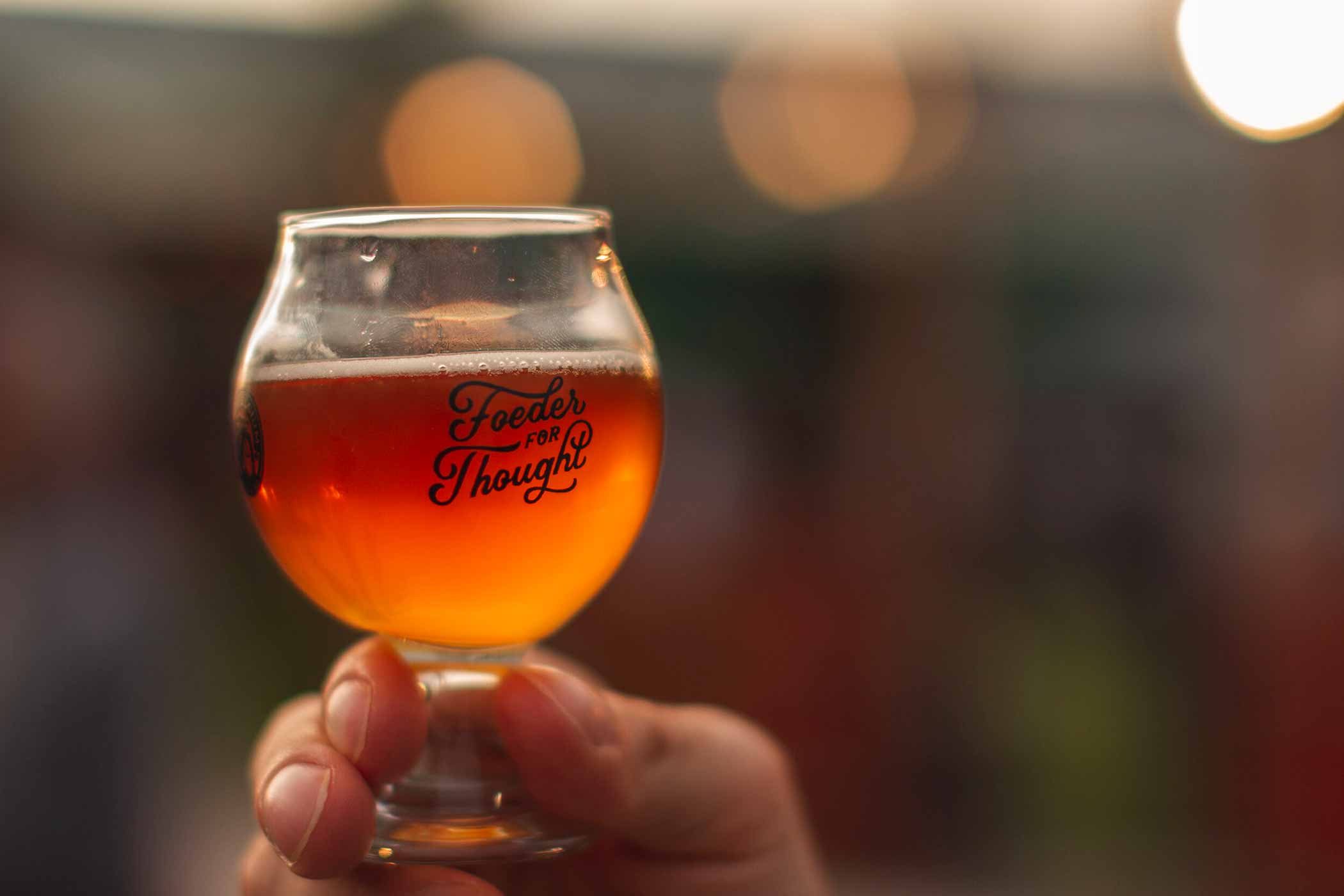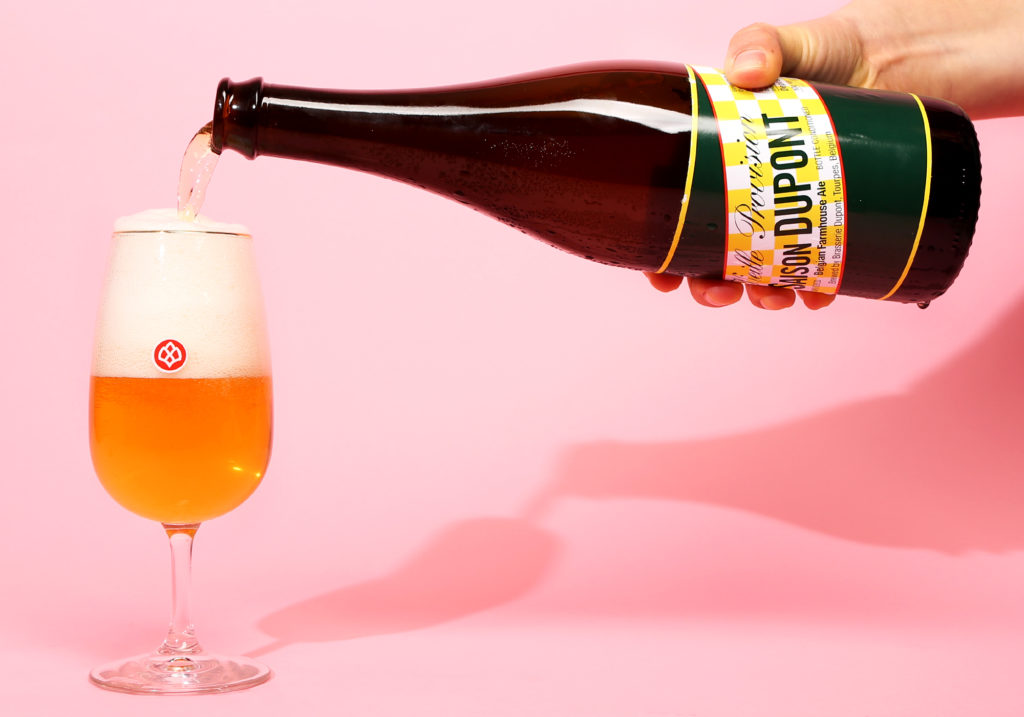Shop
Where the Wild Things Are: Finding a Place for Wild Ales in Craft Beer
Let the wild rumpus start!
The temperatures hovered around freezing, but instead of pulling my duvet up to my neck, I shuffled out of my car into the frosty night. Normally, I have little excitement when leaving my house past my bedtime, but that was not an ordinary occasion. That night I would fill the coolship at Monday Night Garage in Atlanta.
As I walked into the Garage, I felt the buzz of energy. With beers in hand, we squeezed our way into the tiny room that housed the coolship, a small rectangular space lined with soft wood that would resemble a 9×12-inch baking pan if shrunken. As the hot turbid wort rushed into the coolship, the room filled with steam, obscuring most of the faces across from me.
At that moment, I thought of how this time-honored technique beautifully captured a moment on the westside of Atlanta. There’s something romantic about wild ales, beers with connections to old-world brewing techniques, and ones that need time to perfect.
Since that cold but magical night, my fascination with these beers has only grown, along with this nagging question: Why aren’t wild ales more wildly popular?
Getting Funky With Wild Ales
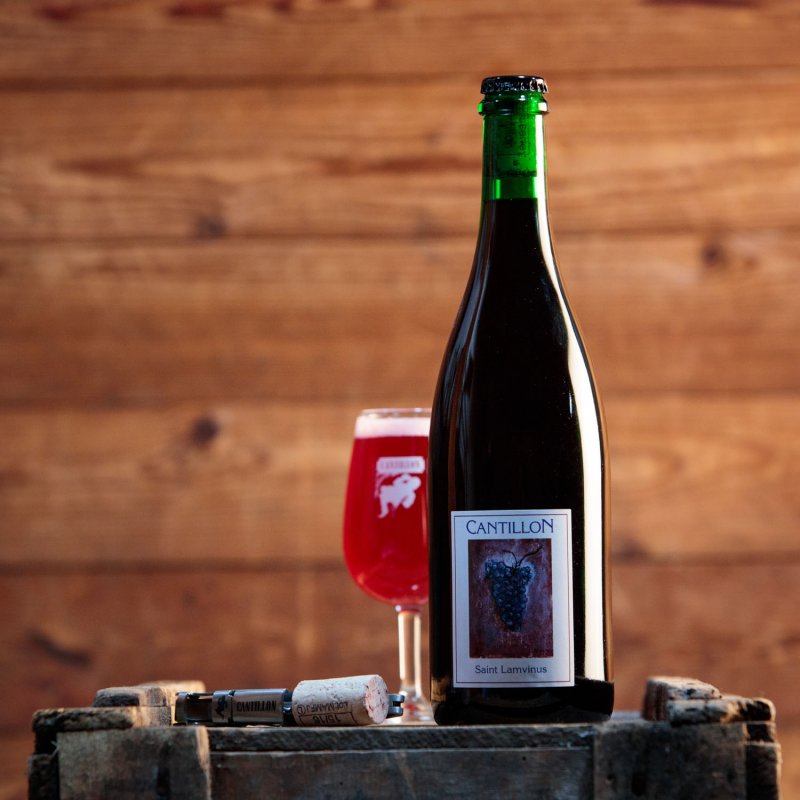
Photography courtesy of Brasserie Cantillon
A wild ale is a beer inoculated with naturally occurring bacteria such as Brettanomyces yeasst and/or Lactobacillus, and Pediococcus bacteria.
Fermentation can happen one of two ways: Either the brewer pitches yeast into the wort, which is how most breweries make beers these days, or the brewer uses a coolship to create a spontaneously fermented beer.
Belgians have a long tradition of brewing wild ales this way, but like most things, the style eventually fell out of favor, leaving only a few producers in the region. The style eventually found its way into the modern world, where breweries like Allagash Brewing Company, Jester King Brewery, and de Garde Brewing became known for celebrating this old-world way of brewing.
Less a style and more a process, wild ales can come in a variety of forms—fruited, spiced, barrel-aged, bottle-conditioned, or hopped. But acidity is the one unifying component. We typically think of wild ales as sour, but it’s the acidity that produces dryness or sourness, depending on what type of yeast the brewer uses.
A Beer by Any Other Name
Farmhouse ales and mixed-culture beers all fall within the wild ale range. Looking closely at saisons, a type of farmhouse ale, the flavor profile can range from earthy, fruity, spicy, and floral, like Saison Dupont, while others can have more funky tartness.
Applying the term “sours” to these types of beers does them a disservice since there’s a lack of consistency in the flavor profile and a wide range of tartness throughout the category.
“There’s so much depth and diversity found in sour beer, mixed-culture beer, or our specialty, spontaneous beers,” says Brandon Boldt, co-owner of Primitive Brewing in Longmont, CO.
Sour is also a limited term because it doesn’t quite capture the complexity acid brings to the table, which can range from delightfully tart like a green apple to face-puckering sour like a lemon.
“There’s lactic acid, malic acid, acetic acid, sorbic acid, citric acid, phosphoric acid—all of these acids taste completely different,” says Khris Johnson, head brewer/co-owner of Green Bench Brewing in St. Petersburg, FL. “The difficulty when you use the term [‘sour’] is it implies to the customer that they know what they’re getting into, but then every time they have [a wild ale] it’s different. And that’s jarring.”
Instead, Johnson uses the term “fermentation forward” to describe the beers he loves brewing and drinking. Out of beer’s four key ingredients—water, hops, malt, and yeast—usually one provides the dominant flavor. For example, IPAs are hop forward while stouts are malt forward. Johnson’s term isn’t foolproof but offers a less-restrictive characterization.
Do Wild Ales Have a Marketing Problem?
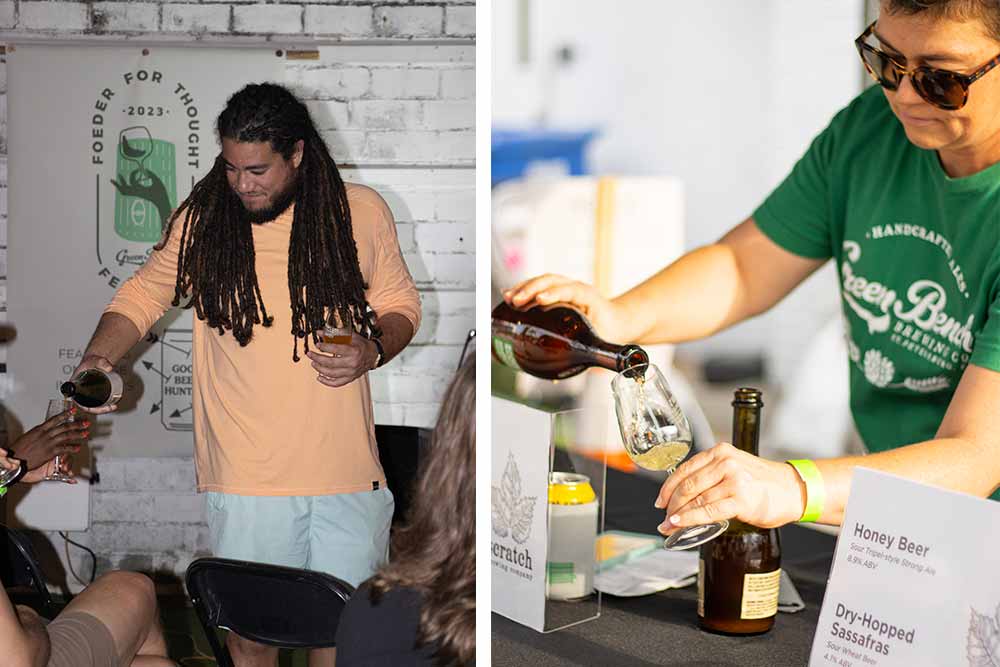
Green Bench Brewing Company’s Foeder for Thought Festival | Photography courtesy of Green Bench Brewing Company
When Green Bench Brewing opened in 2013, they were the first brewery in the southeast to install a foeder, a large oak barrel often used to produce wild ales, which presented the brewery with a problem. “The flavors [of fermentation-forward beers] are so unfamiliar, generally speaking, and they’re so different every time; if you don’t know why this one tastes different from the other one, then you’re probably going to be left with a little less interest in it. And that’s why sometimes they require a conversation,” says Johnson.
During conversations with brewers around the world, Johnson found that discussing the product and the why behind it brought an extra element to the beer and increased his appreciation and enjoyment of those beers he drank.
For that reason, Johnson and his team started Foeder for Thought, an approachable beer festival specifically for fermentation-forward beers. While the festival has changed over time, today’s Foeder for Thought invites breweries specializing in fermentation-forward beers to showcase some of their favorites with panel discussions to walk participants through the brewer’s process and methodology.

Green Bench Brewing Company’s Foeder for Thought Festival | Photography courtesy of Green Bench Brewing Company
“I really enjoyed how personal each brewer approaches their craft, how individual all of their practices are, and how conscious they are of the choices they’re making,” says Kate Bernot, Sightlines writer for Good Beer Hunting and co-moderator for this year’s educational panel at Foeder for Thought.
“That’s not necessarily because of prevailing wisdom, as it would be with brewing an IPA or lager brewing. For the types of beers that these producers are making, there’s not necessarily a manual.”
It wasn’t long before Johnson noticed his patrons growing their wild ale knowledge and showing a desire to learn more. But for a small, short-staffed brewery, educating consumers about fermentation-forward beers can seem insurmountable.
Even the way wild ales are typically presented, in large glass bottles, can feel like a deterrent for lovers of the style. Bernot and I both admitted we’re hesitant to open certain bottles, waiting for a special occasion to crack them. Because of how special and almost precious these beers feel, it can be hard to find the right time and place to enjoy them.
Consistency Is Key
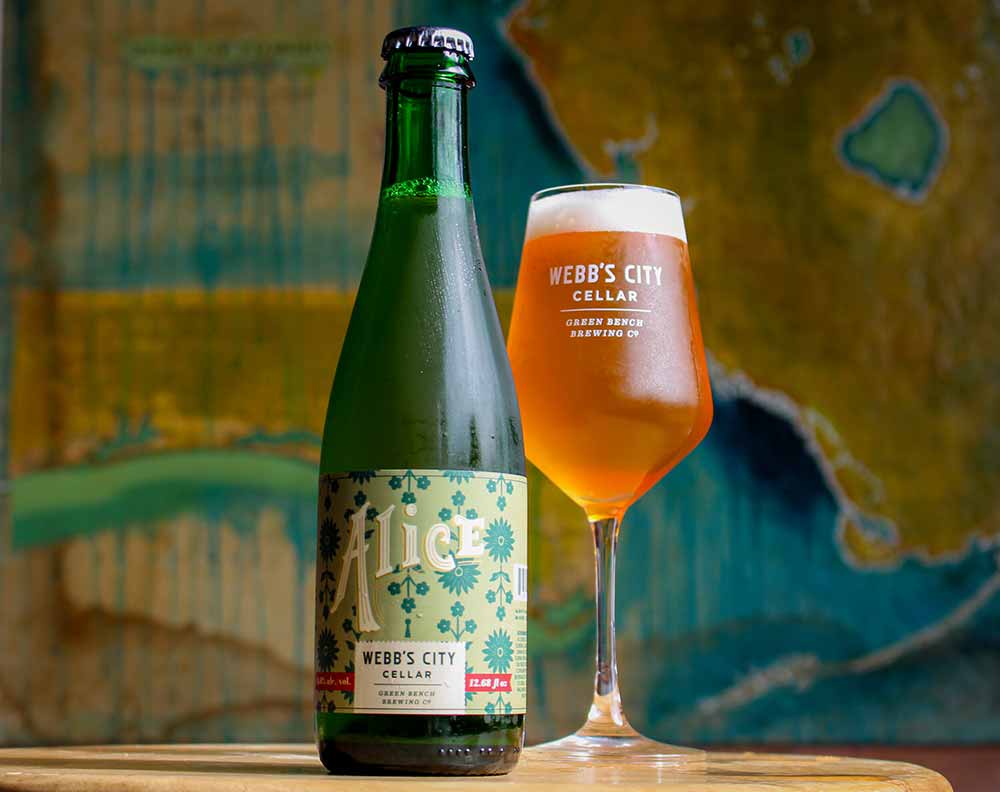
Photography courtesy of Green Bench Brewing Co.
In 1975, Anchor Brewing brewed America’s first modern IPA, but it wasn’t until 1983 that Bert Grant released a beer hopped with Cascade bearing the label of an IPA. Not long after, brewers on the West Coast began cranking out bitter IPAs using Pacific Northwest hops like Centennial, Citra, and Mosaic.
The following decades would see many innovations to the IPA brewing process that would emphasize the bold floral, citrusy, piney, and aromatic quality of the American hops craft beer drinkers love.
In the 2010s, brewers in Vermont and Massachusetts began making IPAs that, when poured, resembled a glass of OJ—thick, viscous, and opaque—with notes of sweet, juicy citrus flavors bounding from the glass. The haze craze has reigned supreme since.
Johnson’s theory on why IPAs continuously dominate the market comes down to the beer’s consistency. “For the most part, [consumers] understand exactly what they’re getting into. There are nuances in each IPA, but generally speaking, the consumer knows what the hell they’re getting into,” says Johnson. “There’s a reason McDonald’s tastes the same everywhere you go. There’s a reason Coca-Cola tastes the same everywhere you go, mostly, and it’s because consistency appeals to the mass market.”
While craft beer consumers don’t fit into the mass market, humans have evolved to value consistency and familiarity while typically fearing the unknown. We train our palates for consistency, for the expected.
What makes wild ales special—the inability to reproduce the same flavors repeatedly—is the same thing that might frustrate someone else. “People who enjoy these types of beers are probably inherently a little more adventurous when it comes to flavors,” says Bernot. For people who want to know what their beer will taste like, the experience could be intimidating.
Wild Ales: Weird and Misunderstood, But That’s OK
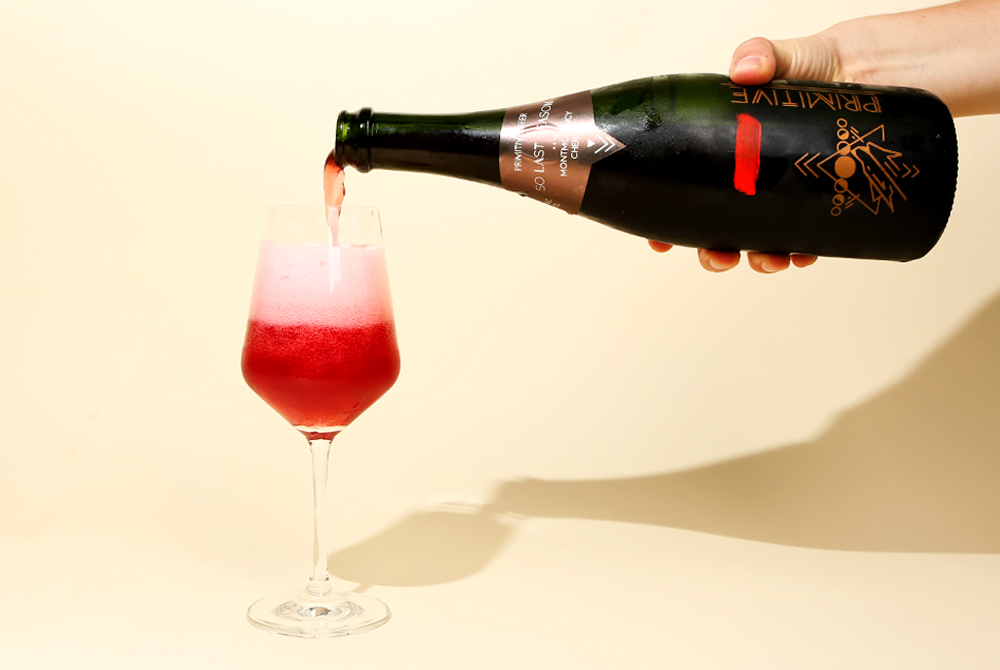
Photography courtesy of John A. Paradiso
Every person I talked to noted that these beers aren’t meant to be popular. “I don’t think that they’re gonna be a trendy beer,” says Aaron Kleidon, co-owner of Scratch Beer. Kleidon points out that the time, effort, and space needed to brew a spontaneous beer compared to an IPA cranked out in a manner of weeks makes it hard for wild ales even to compete.
For breweries like Primitive Beer, their goal isn’t to cater to everyone. “We knew that [spontaneous beers] would never be as popular as IPAs, so we focused on finding our people,” says Lisa Boldt, who co-owns Primitive Beer with her business and life partner Brandon. The couple concentrates on attending festivals like Foeder for Thought and putting their beer in front of people who enjoy exploring new flavors.
“One thing that I’m optimistic about in the future is I think the popularity of fermented foods, at least in America, is on the rise again,” says Brandon. Foods like kimchi, pickles, sauerkraut, and sourdough have become more popular than ever in America.
“It’s a long game, for sure,” says Lisa. “It’s not a get-rich-quick scheme by any means.” She hopes to see more people excited about this beer style and appreciative of what goes into them.
“I don’t believe that this is the style of beer that will ever be able to compete with IPA, nor should it. It goes against its nature. It should be small and community driven, even if we’re able to export it to different markets,” says Brandon.
In a market where IPAs dominate, wild ales and fermentation-forward beers have carved out a small niche of devoted fans who appreciate the adventure in each glass and the work and effort that goes into getting those flavors. And while I’d love to walk into any brewery and find a wild ale to sip on, the idea of them being ubiquitous seems counterintuitive and could jeopardize the charm and character I love so much.

